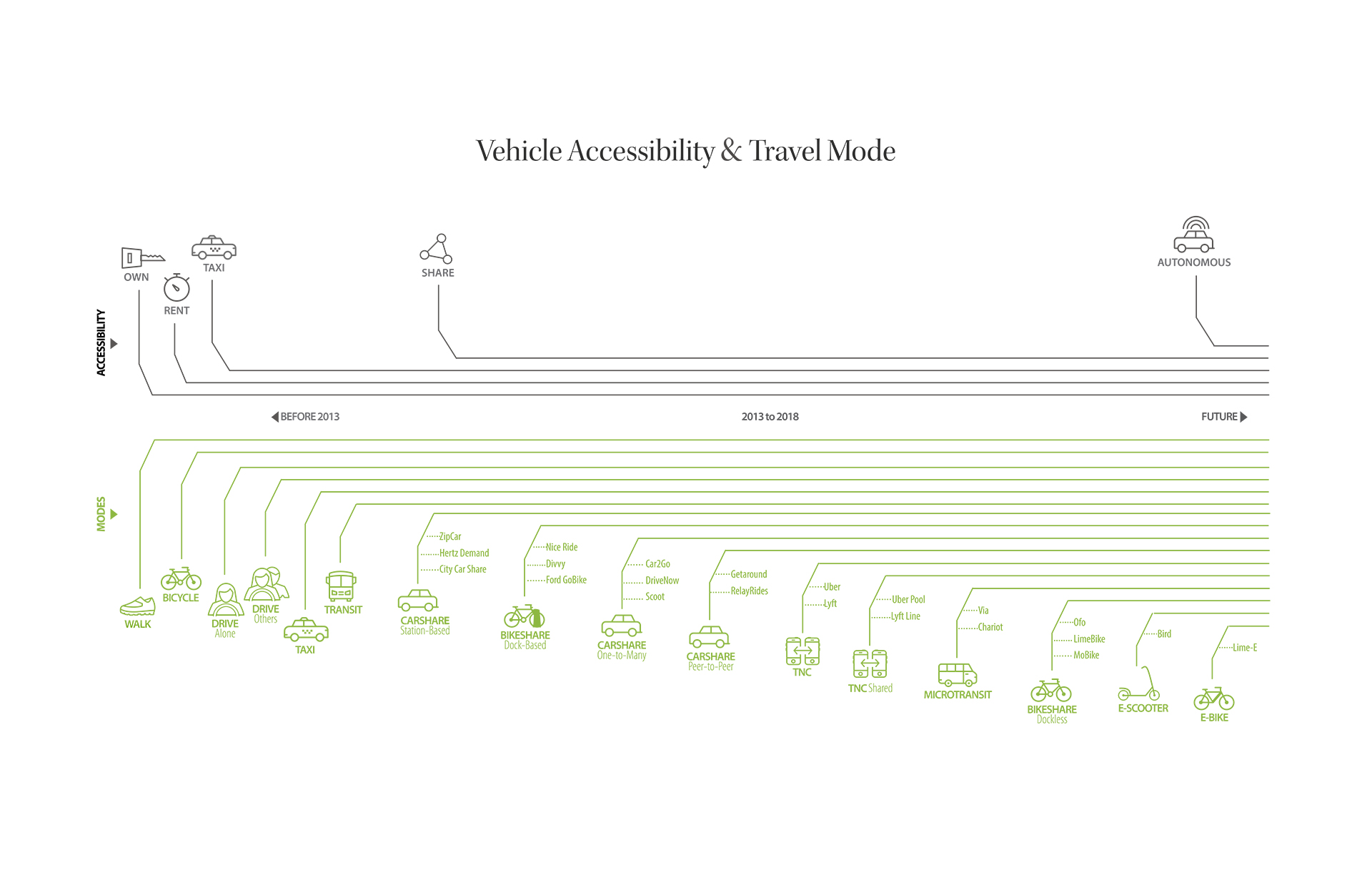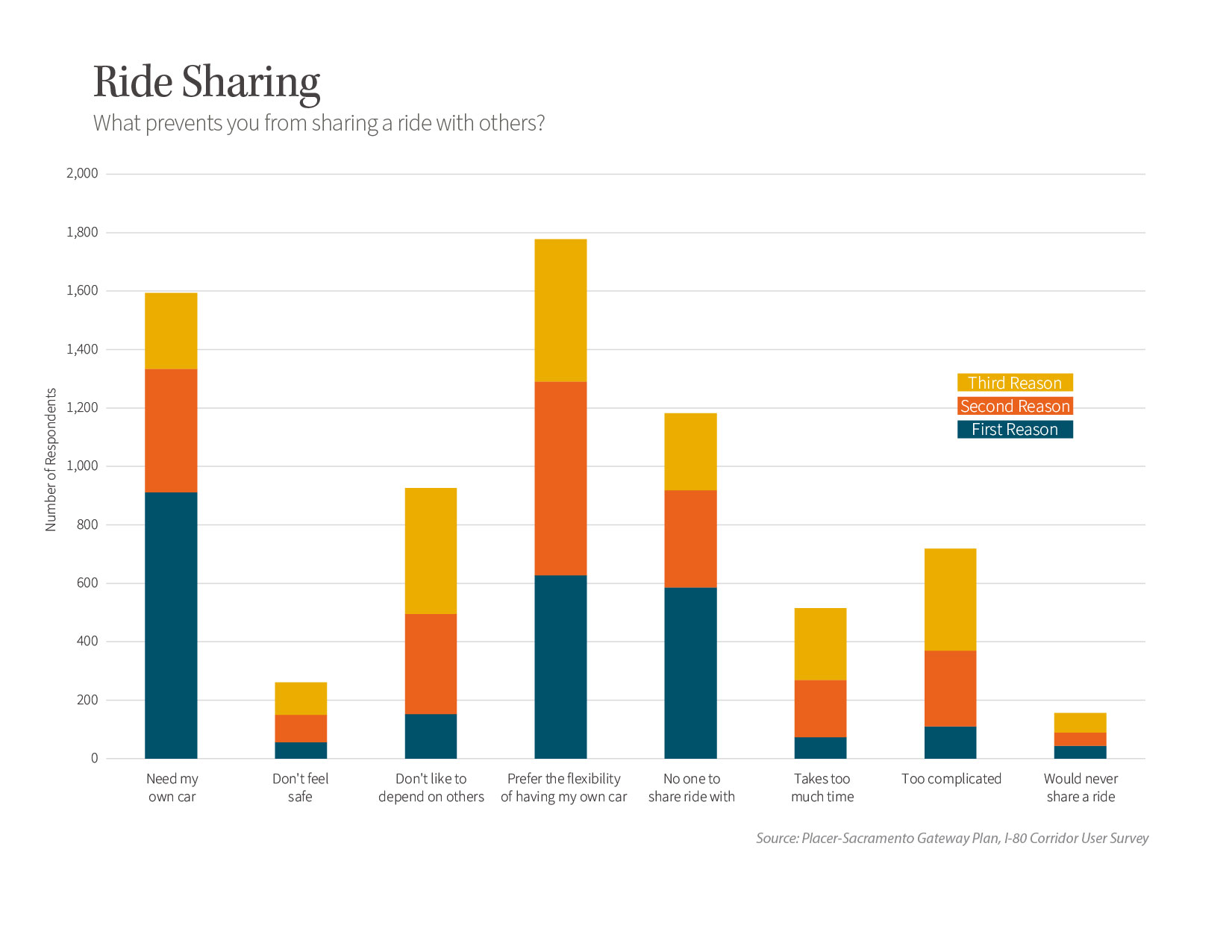A New Narrative for Decision Makers
Seat Utilization: 3 of 3
For the past 100 years, private vehicles have come to dominate the U.S. travel landscape in most cities, but how we access them had changed little until about 2013. This year coincides with the advent of the sharing economy, which introduced not only a variety of new ways to share vehicles and rides in vehicles, but also the sharing of other modes, including bikes and scooters. The sharing economy created a tipping point for travel markets, which is likely to experience another tipping point when autonomous options become widely available.
Part of the private market strategy to increase demand for new mobility products and services includes making vehicle travel more convenient at a lower cost through autonomy. There is no guarantee that the private market will also deliver a high level of shared or pooled rides, especially if travelers place high values on privacy and vehicle choice.
Are we using the right metrics?
Putting all of this together suggests that focusing on congestion as a problem may not provide a complete picture for transportation analysis. Evolving our metrics to more accurately define transportation problems and better account for capacity, emissions, and energy efficiency will likely be necessary for the next 100 years. While we generally understand there are greater efficiency benefits in both space and emissions for shared modes, our transportation plans rarely measure relevant metrics or display efficiency results in the most meaningful way for the public and decision makers.
In a recent study in Sacramento, California, we compared capacity utilization (during the peak hour and peak direction) based on available seats across a screen line that included local bus, commuter bus, regional rail, light rail, and freeway lanes. While seat utilization is generally low across all the modes except for commuter bus, the available transit only has a few hundred empty seats.
Even if every transit seat was full, substantial congestion would remain for the freeway lanes. With over 40,000 private vehicle seats empty in the peak hour, peak direction and over 1,000,000 empty seats through the entire day, the question arises: Do solutions exist that would fill the existing seats and avoid the expensive cost and environmental impacts of adding more inefficient lanes?
Can we fill more seats?
Exploring this new question requires the analysts to diagnose the problem – Why are users not sharing rides? What barriers or constraints exist? Can changes be made to fill some of these seats?
As indicated in the study results, filling these seats is a more complex problem; one requiring behavioral science and economic solutions that influence the price of travel or the convenience of matching rides. Without considering these solutions, a false choice is commonly presented to decision makers. The alternatives are either the no project choice or a roadway capacity expansion alternative that will add more lanes. Alternatives that likely would better manage the mismatch between supply and demand are not included.
Please contact us if you would like more information on evolving transportation metrics and expanding the range of solutions that can effectively reduce congestion, VMT, and emissions.
Learn more by contacting one of our industry experts.
Quick Links
© 2017 – 2024 Fehr & Peers. All rights reserved.




